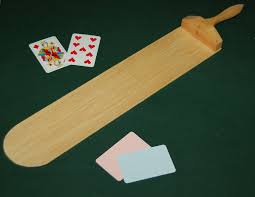THE MATHEMATICS BEHIND “TỶ LỆ CÁ CƯỢC” – WHY NUMBERS MATTER MORE THAN LUCK

In the realm of sports betting, passion drives many to place their bets. But passion alone doesn’t pay. What truly determines long-term success isn’t instinct, but an understanding of the mathematics behind tỷ lệ cá cược. This article takes you behind the scenes to explore the numbers, probabilities, and margins that make or break a betting strategy.
1. The Core Function of “Tỷ lệ cá cược”
“ty le ca cuoc” (betting odds) are much more than random numbers or payout multipliers. They’re mathematical representations of implied probability. For example:
- Odds 2.00 mean a 50% chance (1 / 2.00 = 0.50)
- Odds 1.50 mean a 66.67% chance (1 / 1.50 = 0.6667)
- Odds 3.00 imply a 33.3% chance
Understanding this relationship allows bettors to compare the odds offered by bookmakers with their own estimations.
2. The House Edge: Hidden in Plain Sight
Bookmakers don’t just create tỷ lệ cá cược based on true odds. They build in a margin, or overround, to guarantee long-term profit. Let’s say a match has three possible outcomes:
- Home win: 2.20
- Draw: 3.30
- Away win: 3.20
The implied probabilities are:
- Home: 45.45%
- Draw: 30.30%
- Away: 31.25%
= Total: 107%
That extra 7% is the bookmaker’s edge. Recognizing this helps you understand when a bet is fair—or when you’re being overcharged.
3. Expected Value: The Sharp Bettor’s Compass
The most successful bettors don’t ask “Who will win?” Instead, they ask: “Is this bet profitable in the long run?” That’s where expected value (EV) comes in.
EV = (Probability of winning x Profit) – (Probability of losing x Stake)
Suppose you estimate a 50% chance for a team to win, and the tỷ lệ cá cược is 2.20.
- EV = (0.5 x 1.20) – (0.5 x 1.00) = 0.10 → +EV (good bet)
If your expected value is negative, the bet will lose money over time, no matter the short-term result.
4. Overcoming Bias in “Tỷ lệ cá cược”
Bookmakers know the public often bets emotionally. They adjust tỷ lệ cá cược to exploit this.
For instance:
- Famous teams like Manchester United or Real Madrid usually attract more bets.
- Odds are skewed lower on these teams to reduce potential payout.
- Casual bettors fall for it.
Savvy bettors identify these biases and bet on overlooked teams where odds are more accurate or undervalued.
5. Data Modeling vs. Gut Feeling
Relying on your “gut” is a quick path to losses. Today’s serious bettors use data models to predict outcomes and compare them with tỷ lệ cá cược. Some variables include:
- xG (expected goals)
- Home vs. away performance
- Injuries/suspensions
- Head-to-head history
- Schedule congestion
Once you’ve modeled your probabilities, look for where they diverge from the market. That’s where value lies.
6. Arbitrage: Guaranteed Profits from Odd Discrepancies
In rare cases, differences in https://tylecacuoc.day/ across multiple sportsbooks allow for arbitrage – betting on all outcomes and locking in profit regardless of result.
Example:
- Bookmaker A: Team A win – 2.10
- Bookmaker B: Team B win – 2.10
A bettor places equal bets on both outcomes. No matter who wins, they earn a small profit. While these opportunities are rare and short-lived, they demonstrate how powerful mathematical analysis of odds can be.
7. Final Thoughts
Success in betting is not about emotion or fandom. It’s about mastering tỷ lệ cá cược, decoding the numbers, understanding risk, and making decisions based on value—not bias. Every bet is a transaction. And in every transaction, knowing the true price makes all the difference.
If you want to win in the long run, study the odds like a trader studies the stock market. Because in betting, knowledge of numbers isn’t optional—it’s everything.